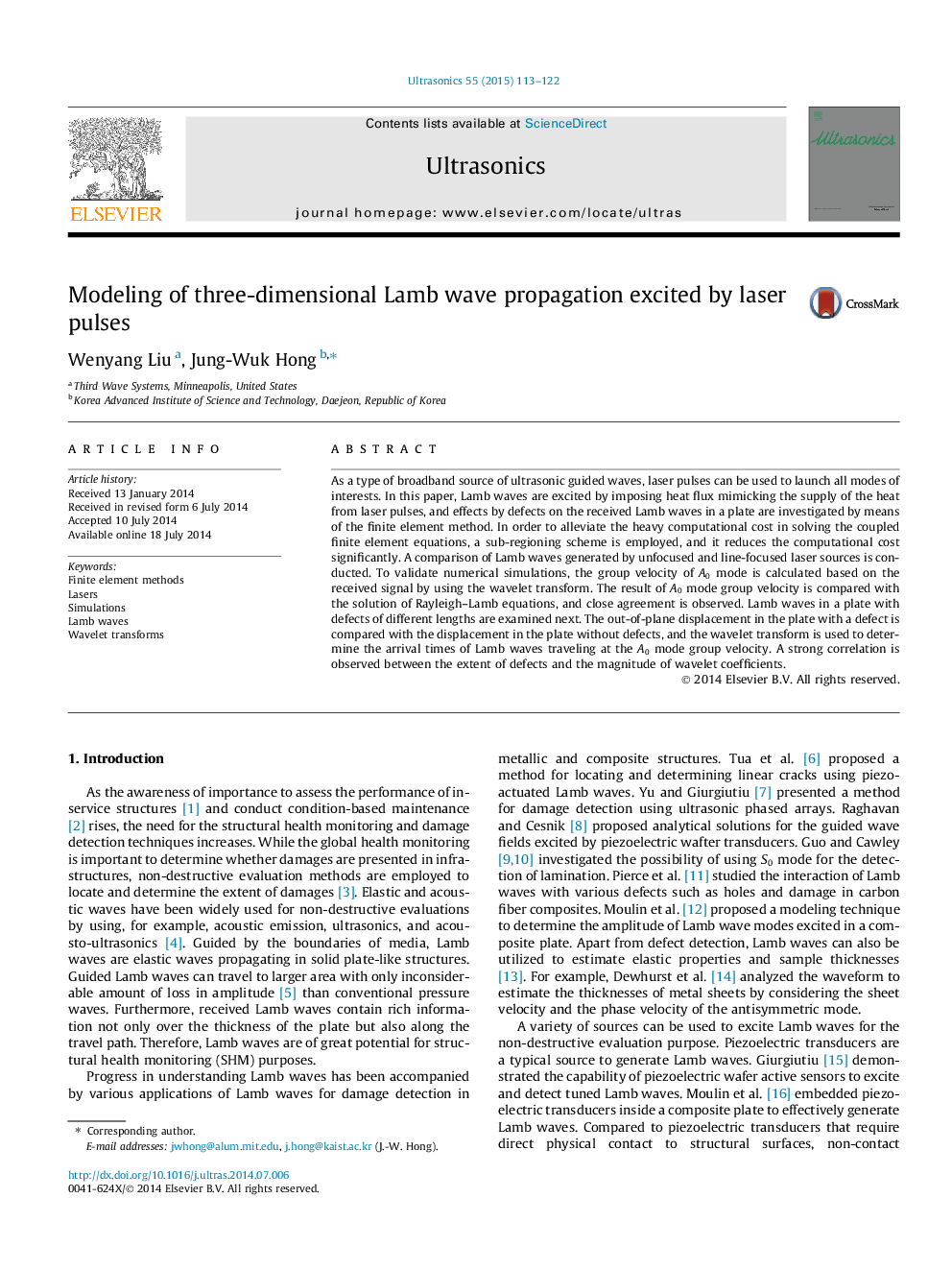| Article ID | Journal | Published Year | Pages | File Type |
|---|---|---|---|---|
| 1758772 | Ultrasonics | 2015 | 10 Pages |
•Three-dimensional Lamb wave propagation excited by laser pulses is modeled.•A comparison of Lamb waves generated by un-focused and line-focused laser sources is conducted.•Lamb waves in a plate with defects of different lengths are examined.•Wavelet transform is used to analyze received signals and compute the arrival times of Lamb waves.•Correlations between the extent of defects and the magnitude of wavelet coefficients are discussed.
As a type of broadband source of ultrasonic guided waves, laser pulses can be used to launch all modes of interests. In this paper, Lamb waves are excited by imposing heat flux mimicking the supply of the heat from laser pulses, and effects by defects on the received Lamb waves in a plate are investigated by means of the finite element method. In order to alleviate the heavy computational cost in solving the coupled finite element equations, a sub-regioning scheme is employed, and it reduces the computational cost significantly. A comparison of Lamb waves generated by unfocused and line-focused laser sources is conducted. To validate numerical simulations, the group velocity of A0A0 mode is calculated based on the received signal by using the wavelet transform. The result of A0A0 mode group velocity is compared with the solution of Rayleigh–Lamb equations, and close agreement is observed. Lamb waves in a plate with defects of different lengths are examined next. The out-of-plane displacement in the plate with a defect is compared with the displacement in the plate without defects, and the wavelet transform is used to determine the arrival times of Lamb waves traveling at the A0A0 mode group velocity. A strong correlation is observed between the extent of defects and the magnitude of wavelet coefficients.
